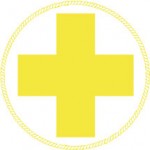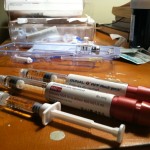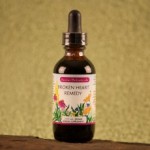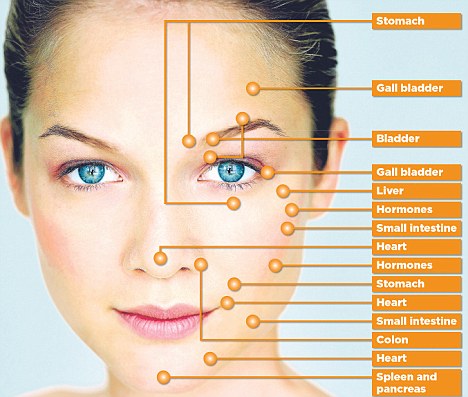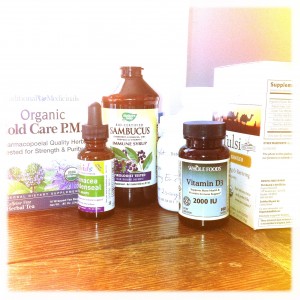How to Eat Gluten Free
Gluten Free is the new Vegetarian – almost every grocery store now has gluten free breads and products in their freezer sections, and crackers and baking mixes in the aisles. Websites abound on not only celiac disease resources (a disease caused by severe gluten allergy) but also on gluten sensitivity, a mlder form of systemic immune response to the gluten molecules. It is easy to find gluten free recipes, resources, and restaurants in almost any geographical area.
So, what is all the hype? The bottom line is that gluten sensitivity begins with the immune system of the digestive tract becoming hypersensitive to gluten proteins like gliadin. The body creates antibodies to the sequence of amino acids, which enter the bloodstream and travel throughout the body. Whenever these antibodies see that same sequence (which is repeated as a small part of many tissues of the body exposed to blood i.e. thyroid, joints, brain, lungs, skin) they attack that tissue as if it was gluten. This creates “auto” or “self” antibodies, which are then produced in greater and greater numbers causing symptoms in a diverse set of body systems.
Therefore, gluten has been linked to autoimmune diseases such as lupus, rheumatoid arthritis, Hashimotos thyroid disease and multiple sclerosis. These are end stage conditions that develop years after smaller warning signals such as headaches, digestive disturbance, asthma, allergies, psoriasis, alopecia, insomnia and various “undiagnosible” ailments. Eliminating the offending foods or doing tests to assess your body’s immune response is the only way to assess if food is an underlying factor in your ill health.
Gluten is a protein that is found in the following Grains:
- Wheat
- Rye
- Barley
- Kamut
- Spelt
- Oats is technically gluten free but very often contaminated in manufacturing.
Therefore, people with a gluten sensitivity or allergy cannot eat any of these grains, or products that contain them such as soy sauce, gravy, doritos or other gluten based products. Oats are technically not a gluten containing grain, but should be avoided unless it states “gluten free” on the package.
Non Gluten Grains which are safe for gluten allergies & sensitivities include:
- amaranth: highly nutritious, tiny seeds available whole or as a
- rice: including brown and white rice, Arborio, basmati and rice flour
- corn: including cornmeal, cornstarch and corn flour
- millet: small seeds, eaten whole or combined with other gluten-free flours
- quinoa: small seeds that can be eaten whole, as a hot cereal or ground into flour
- buckwheat: used whole, cracked or ground into flour
- oats: gluten free oats and oat bran
- tapioca: made from cassava root, often combine with gluten-free flours
- teff: very small black grain, contains symbiotic yeast
- arrowroot: a starch used as a thickener, superior to cornstarch, blends well with gluten-free flours
Potatoes, sweet potatoes, squash, and other starchy vegetables can also be enjoyed by those who are gluten free.
For more information on gluten allergy, see http://www.thedr.com./store.html and order Unlocking The Mysteries of Wheat and Gluten Intolerance for yourself. Dr. Tom DC offers eloquent and thorough evidence based information on why it is worth at least trying gluten free living for one month and then reassess.
Many people have a wheat sensitivity or allergy, but can tolerate other gluten grains like spelt and kamut. Some people with a wheat, but not gluten sensitivity will later develop a gluten sensitivity. Corn, potato, dairy and/or soy sensitivities are also common in people with gluten sensitivities. For this reason, it is best to start food eliminations by eliminating all of the above products, and slowly reintroducing each gluten grain as well as corn, potatoes, and soy separately to judge your individual reactions.
AVOID FOR GLUTEN -FREE SHOPPING:
- look for labels that say – wheat (or whole wheat) flour, wheat germ, bran, farina, graham flour, semolina, gluten, modified food starch, wheat starch, vegetable starch, vegetable gum
- Pastas – spaghetti, vermicelli, macaroni….. buy rice pasta, corn pasta, or some of the newer legume (bean) based pastas. Must say “gluten free”
- Soups – commercially canned – read labels for “flour” or wheat
- Desserts – most contain wheat – so read labels carefully
- Cereals and breads – as with desserts – read labels carefully
- It’s probably best to go to health food store in order to find alternatives. Most breads, bagels, wraps, pizza doughs, etc are kept in the freezer sections
- For persons allergic to wheat, but not to gluten, you can use flour substitutes such as spelt or kamut (these are the most similar to wheat); rye, oats and barley can also be eaten.
TIPS FOR A GLUTEN-FREE DIET:
- focus on protein, vegetables, fruits, and healthy fats like avocado
- Lots of delicious gluten free options abound: Tray various pasta, breads, crackers, etc until you find what your taste buds prefer.
- Avoid any food that contains wheat, barley, rye, oats – as well as spelt and kamut. Also, remember that gluten can be found in most processed foods, including soups, sauces, gravies, and of course in breads, cereals, and desserts.
- 40% of people allergic to gluten are also allergic to soy and/or corn – which are often found in “gluten-free” breads, etc.
- READ LABELS on everything the first few months to find hidden sources of gluten.
Eating Out and Travelling:
Most cream based soups and chowders are made with a gluten base. Boone’s in Portland has a gluten free chowder, bisque, crab cakes etc if you are craving those.
It is pretty easy being gluten free in restaurants once you get the hang of it. Focus on protein and vegetables, fancy salads and avoid gravies, pasta, gnocchi and sandwiches. If you are craving a burger, ordering it without the bun is pretty standard in today’s low carb world. Steak and arugula salad is always a good choice.
Sadly, fried treats are out the window like calamari, fried clams, fish and chips… once it gets battered it is almost always a wheat base. French fries are also often battered. Best to ask ahead of time instead of getting a delicious plate of inedible fries. Frontier restaurant in Brunswick has delicious GF fish and chips, and rice flour calamari. Not cheap but delicious!
Fish options and mussels or raw oysters rarely have gluten unless they are fried or pan fried. Eating fish at home with rice and salad is a great nutritious option too.
Some places have gluten free sandwich bread but most places don’t. In a pinch on the road, subway will make a “chopped salad” which is basically a sub in lettuce/salad. Planning your food and having fruit, yogurts, nuts & seeds or trail mix, protein bars, and even leftovers or sandwiches on GF bread you make yourself before you leave become important while travelling.
What else? Gluten free breads and crackers abound. I personally like Millet breads the best – available in Whole Foods GF freezer section. Rice breads tend to be very dense and gummy, but are easy to find. Mary’s Gone Crackers are a great GF crackers, followed by Nut Thins and Glutino brand. Glutino also makes a great pretzel. Rice cakes can have a bad reputation but are a quick tasty snack and great vehicle for dips, cheese, avocado and almond butter.
Sweets: Lots of gluten free cookies and treats are available! Any ice cream or candy without “cookie dough” or brownies or cones is usually GF. Many coffee places have at least one GF option. Flourless chocolate torte, chocolate mousse, crème brule or pannacotta are restaurant dessert options that are usually safe.
Namaste company also makes a “Perfect Flour” gluten free mix of flours that you can buy and use with any recipe. Makes cookies really easy!! They also have a great pancake mix if you love pancakes.
Tips for substituting wheat flour:
- do not be concerned if batter appear thinner than wheat batters, this is common
- add 1/2 tsp baking powder per cup of substitute flour; add just before cooking because it loses its potency when mixed with liquid and allowed to sit
- refrigerating dough 1/2 hour helps improve texture
- do not bake anything thicker than 4 inches
- when baking, lower the temperature a little
- baking time is usually longer, especially if egg or milk is eliminated from the recipe
- experiment with your options – buy small quantities from a bulk food store and make half recipes first
For thickening, the following quantities equal 1tbsp of wheat flour:
*Arrowroot 1 tbsp = 2 tbsp wheat flour
*Corn starch 1 tbsp
*Potato flour/starch 1/2 tbsp
*Rice flour 1/2 tbsp
*Tapioca flour 1/2 tbsp – my favorite



